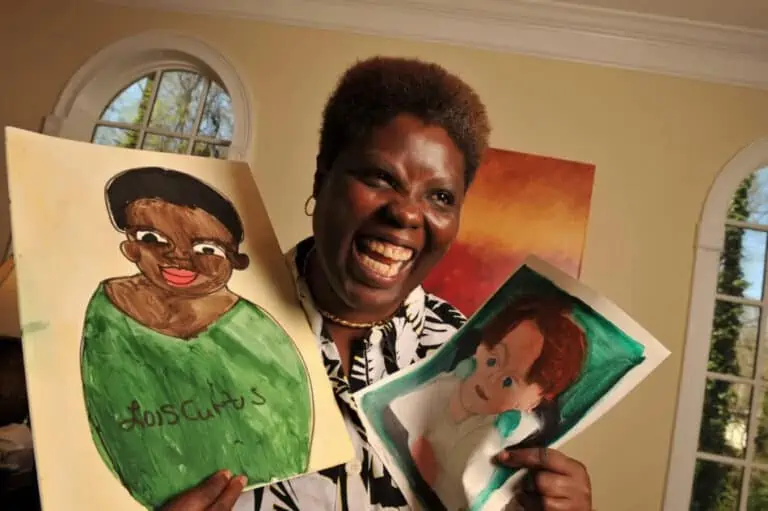ASAN is mourning for Lois Curtis. Lois Curtis was one of two people who sued for their rights in an important disability rights case called Olmstead v. L.C. She died this past Thursday at age 55.
As a child, Lois Curtis was put in an institution. Later in her life, she remembered that she used to pray at night to get out of the institution. As a young adult, Lois started calling an organization called Atlanta Legal Aid. She asked Atlanta Legal Aid to help her get out of the institution and move into the community. Atlanta Legal Aid decided to work with Lois. They helped her and another woman, Elaine Wilson, sue for their rights. The case went all the way to the Supreme Court. In 1999, the Supreme Court decided that the Americans with Disabilities Act gave disabled people the right to receive services in the community, not just in an institution.
After getting out of the institution, Lois eventually moved to her own home in Atlanta. Her community loved her, and she made beautiful art. Lois used a kind of supported decision-making called a “microboard.” This was a small group of people who had regular meetings to talk about Lois’ life. They helped make sure she had what she needed and achieved her goals. Lois’ microboard helped her get a self-directed services waiver from Medicaid. They also helped her show her artwork in galleries. In 2011, Lois visited the White House for a celebration of the anniversary of Olmstead. At the White House, she gave President Obama a painting called “Girl in Orange Dress.”
In 2015, a friend asked Lois, “What do you wish for all the people you’ve helped move out of the institution to live in their communities?” Lois answered: “I hope they live long lives and have their own place. I hope they make money. I hope they learn every day. I hope they meet new people, celebrate their birthdays, write letters, clean up, go to friends’ houses and drink coffee. I hope they have a good breakfast every day, call people on the phone, feel safe.”
Because of Lois, people with disabilities have the right to receive services in the community. The Olmstead decision has led the government to make more opportunities for people with disabilities to get services outside of institutions. Advocates and the government use the Olmstead decision to fight for disabled students’ rights to learn in the same classroom as non-disabled students. Advocates and the government use Olmstead to fight for disabled workers’ rights to work in the same workplace as non-disabled workers, and earn a competitive wage.
ASAN remembers Lois Curtis’ amazing life, and we will honor her in our work. We will do this by:
- Working to make sure that everyone has the rights that the Olmstead decision promises them.
- Making sure that more people can use supported decision-making and alternatives to guardianship.
- Following the leadership of Black disabled advocates and advocates with intellectual disabilities.
Lois Curtis was given no option but to live in an institution, but she refused to accept that and created a different path to follow — for herself and for many other people with disabilities. Rest in Power, Lois Curtis.

